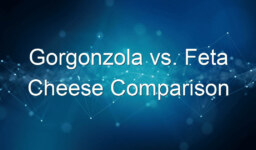Kielbasa and sausage – two similar smoked meat products that originate from different culinary traditions. Many people use the terms interchangeably, but there are distinct differences between the Polish kielbasa and the ubiquitous sausage.
Understanding the unique origins, ingredients, flavors, and uses of kielbasa helps appreciate why it stands apart from its sausage cousins. Whether cooking an authentic Eastern European meal or simply grilling out, recognizing what sets these two smoked meats apart can lead to more informed choices.
Brief History and Origins
Kielbasa traces its origins to Poland and across Eastern Europe, where it became a staple meat in Slavic diets over many centuries. The word kielbasa comes from the Polish word meaning “sausage,” derived from the Turkic languages. Its roots reach back to at least the 15th century in Poland.
The seasoned, smoked meat became a traditional staple ingredient across many cultures in the region. Kielbasa became closely tied to Polish national identity and heritage. Regional varieties like the peppery Krakowska kielbasa came to prominence over centuries.
Sausage as a category of food has much deeper roots extending back to ancient civilizations. The Sumerians, Greeks, and Romans were all making early forms of sausage over 2500 years ago. The Latin word salsus meaning salted or preserved gave rise to the modern term sausage.
Unlike the distinct Eastern European tradition of kielbasa, sausages evolved independently across different cultures worldwide. The sausage tradition spread from Europe across the globe, adapting endless forms.
Unique Ingredients and Preparation
While both use a ground and stuffed meat emulsion, kielbasa tends to have a more homogenous mix of pork and spices. Garlic, marjoram, smoked paprika, and black pepper comprise traditional seasonings. Pork and beef combine in varying ratios, sometimes with veal.
Sausages encompass a much wider range of ingredients and recipes. In addition to pork, sausages may contain poultry, game meats, seafood, even offal. Spices and flavorings run the gamut from herbs to cheeses to wine. Anything ground and encased can become a sausage.
Many Eastern European kielbasa also undergo smoking and lengthy curing. This lends a distinctive hardened exterior and deeper, smokier flavor. Kielbasa traditionally uses large casings compared to many types of sausages.
Myriad Global Sausage Varieties
While kielbasa takes on different regional forms, the spectrum of global sausage varieties defies categorization. Each country offers its own sausages, from Bratwurst in Germany to Chorizo in Mexico. Local flavors and ingredients define different sausages.
Popular examples include spicy Italian sausage, herby breakfast sausage, coarse-grained French saucisse, and white bratwurst sausages speckled with bacon. Smoked Polish kielbasa certainly qualifies as a distinct Eastern European sausage in its own right.
Beyond national and regional sausages, more varieties abound. There are cooked, smoked, fresh, and dried sausages. Size ranges from large salami sausages to tiny cocktail links. The global sausage tradition embraces this diversity.
Flavor Profiles and Uses
Signature seasonings give kielbasa a distinct garlic and paprika flair. This robust flavor stands up well to hearty bean dishes and braised greens. Kielbasa works nicely in classics like gumbo, jambalaya, and cabbage rolls. Grilling imparts a wonderful charred exterior.
The wider array of sausage types align with endless flavors and dishes. Spiced chorizo makes perfect tacos, while ** breakfast sausages** pair with eggs. Bratwurst classically garnishes German dishes. Sweet Italian sausage atop pizza pleases crowds. Applications for different sausages cover any meal.
Kielbasa does tend to contain more fat than many other sausages, which contributes to richness. Smoking and curing also increase the intensity and preservation of kielbasa. These attributes make it ideal for simmering in soups.
Nutrition and Ingredients Vary Greatly
Like most cured and smoked meats, kielbasa trends higher in fat, calories, and sodium than fresh sausages. Smoking and curing add preservatives like sodium nitrite. Check labels, as ingredients vary widely between brands.
With endless sausage varieties, nutrition ranges vastly. Uncured chicken apple sausage differs greatly from a pork bratwurst. Some sausages contain cheese, wine, or unconventional additions. Dietary needs and restrictions factor into sausage selection.
In general, fresh sausages have fewer preservatives than cured or smoked types. Lean chicken and turkey sausages offer lighter options. Smaller sausages also mean eating reasonable portions easier. Always read sausage labels closely.
Finding Authentic Kielbasa
Imported Polish kielbasa provides the most authentic flavor and texture. Brands from kielbasa’s native region offer standards like Krakowska, a smoked pork and beef kielbasa seasoned with garlic and peppercorns. Finding them may require visits to specialty grocers or online ordering.
Domestically produced kielbasa in large grocery stores often lacks the imported nuances. Check labels for preservative-free, natural kielbasa made from quality meats and spices. For most recipes, this reasonably mimics the real deal.
With sausages, always sample new varieties before buying in bulk. Regional butcher shops offer house-made sausages with quality ingredients. Farmers markets also shine for artisanal makers trying adventurous flavors.
Cooking Methods Differ
Kielbasa links hold up well to searing, grilling, and braising. Sliced rounds added to soups and stews impart big flavor. Boiling can make the casing chewy, so gentle simmering works better. Pan-frying adds crispness without drying it out.
Sausages suit so many cooking methods from steaming to baking to sautéing. Different styles of sausage align with certain applications. Bratwurst and breakfast links pan-fry or grill up nicely, while Italian sausage crumbles beautifully into red sauce.
Always pierce skins before cooking sausages and kielbasa to prevent bursting. Cook slowly over medium heat to melt fat without burning. Bring sausages to minimum safe internal temperatures.
Geographic Availability of Kielbasa
Imported kielbasa remains easiest to find across much of Europe, especially Germany, Austria, the Czech Republic and the Baltics. Ethnic grocers in the Americas and Australia stock various types. Large metro areas with Polish communities gain access more readily.
Of course, sausages reign supreme in their native lands – bratwurst in Germany, chorizo in Spain and Mexico, saucisses in France, and so on. But as a global meat, sausages reach most markets in some form. Their popularity makes availability near universal.
For urban dwellers lacking ethnic markets, online kielbasa or sausage ordering solves the problem. For the authentic article, imported Always refer back to the criteria above to make informed selections.
Cultural Significance of Kielbasa
Kielbasa remains woven into Polish and Slavic culture, identity, and food traditions. It connects immigrants to comforts of home. Events like weddings and Easter incorporate kielbasa. Many older generation Poles recall holiday kielbasa making.
Some of kielbasa’s cultural significance stems from its preservation of heritage meats against oppression. Polish kielbasa recipes helped sustain traditions even through troubled eras. Its ties to national pride and resilience run deep.
The ubiquitous sausage certainly makes cameos in worldwide cultural celebrations and dishes. But few independent sausage varieties inspire the raster identity connection of Poland’s beloved kielbasa.
Conclusion
Kielbasa earns its distinction among the global array of sausages. While both emanate from ancient preserved meat traditions, kielbasa’s specific Eastern European origins and customs give it a uniqueness. When only authentic kielbasa will do for that perfect pierogi dish or stew, understanding its hallmark flavor and texture characteristics helps locate the real thing. Beyond the supermarket sausage aisle lies a whole world of traditional kielbasa waiting to be discovered.
FAQ
What is the difference between kielbasa and smoked sausage?
While kielbasa is a type of smoked sausage, it differs from generic smoked sausage in its signature spices, larger diameter, and specific curing process. Kielbasa uses more garlic, paprika, and pepper flavor compared to the wider range found in smoked sausages.
Is kielbasa just a Polish sausage?
Kielbasa is strongly associated with Polish culinary tradition but also appears across other Eastern European countries. Regional varieties all share the common origins and preparation style but feature certain spice differences.
Why is kielbasa firmer than other sausages?
The smoking and curing process gives kielbasa a chewier, dense texture and hardened exterior compared to softer and more emulsified sausages. The typical stuffing into large casings also contributes to its signature firmness.
What is the most authentic kielbasa?
For traditional kielbasa flavor and texture, imported Polish brands like Krackowska offer time-honored recipes. But several domestic kielbasa companies reproduce the smoky, garlicky qualities fairly closely.
Can you substitute kielbasa for any sausage?
Kielbasa works best in hearty bean and kapusta dishes, stews, soups, and other braising applications. The assertive garlic and paprika flavor doesn’t always substitute seamlessly for sausages with specific spice blends.
How unhealthy is kielbasa?
Like most smoked and cured sausages, kielbasa skews higher in saturated fat, sodium, and preservatives like nitrites than fresh sausages. Enjoying kielbasa in moderation remains the best approach.




